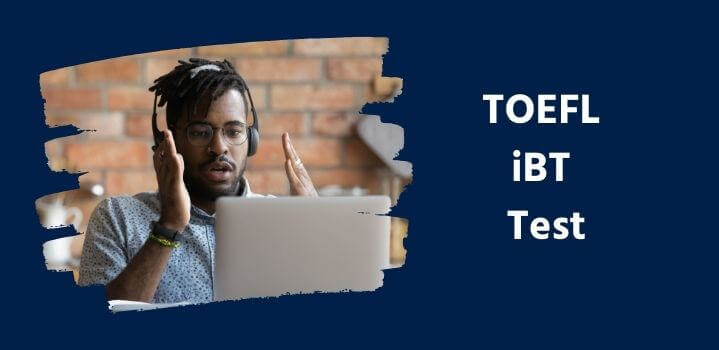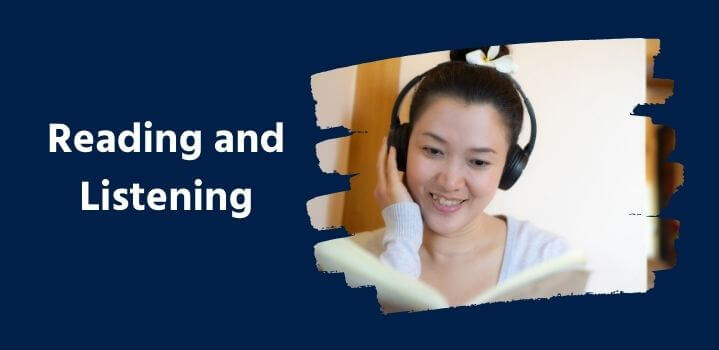
TOEFL iBT Test Explained
The TOEFL, or Test of English as a Foreign Language, is used to measure non-native English speaker’s ability to use and understand the English language. The test is administered by the Educational Testing Service (ETS), and universities and colleges worldwide use it to determine whether or not a student is proficient in English.
The TOEFL test is one of the most popular English proficiency tests globally. Since 2006, the TOEFL iBT (internet-based test) has been the main format of the TOEFL that is accepted by universities. The TOEFL iBT is a computer-based test that measures a student’s ability to use and understand English in a university or college setting. The test consists of four sections: reading, listening, speaking, and writing.
History of the TOEFL test
In 1962, a group of educators from the United States and Canada created the Test of English as a Foreign Language (TOEFL). The test was designed to measure how well non-native English speakers could use the language in an academic setting. The first TOEFL exam took place in 1964.
The current TOEFL iBT test
The standard TOEFL iBT (Internet Based Test) is taken at recognised test centres. Even though the test is internet-based, the exam still has a human examiner and interaction.
In early 2020 ets.org launched a home-based TOEFL iBT test available in most, but not all regions. This home-based test became popular due to restrictions put in place due to Covid-19. This home-based test follows the same format.
The interaction with the examiner takes place via video call. There are some other differences and restrictions that you can read more about on the et.org website. In this article, we will focus on the standard iBT test.
The test measures a student’s ability to use English in an academic setting. It consists of four sections: reading, listening, speaking, and writing, the same as the original paper-based test.

How many sections and how long does the test take?
The test takes 3 hours in total, including a 10-minute break halfway through. It would be best to allow extra time on the test day as you will need to check-in and confirm your identity before the stat starts. The registration usually takes around 30 mins.
Each test section has a time limit that you cannot go over. After the first two sections, you get a 10-minute break.
SectionTime LimitReading54-72 minutesListening41-57 minutesBreak10 minutesSpeaking17 minutesWriting50 minutesHow is the test scored?
For the iBT test, each section has a score of 0 to 30, and An overall score is given out of 120 based on the four sections.
SectionScoreReading0-30Listening0-30Writing0-30Speaking0-30Your score is out of 30 in each section. However, you may notice that not all the sections have 30 questions.
To translate this into 30, you are given a “raw” score determined by the number of questions you answer correctly in each section. The number of questions you answer right is the same as your raw score.
If you answer 40 questions correctly, then your raw score is 40.
This “Raw” Score is then translated into a score out of 30 using a conversion table unique to each test.
Reading and listening sections
The reading and listening section has a set number of questions you must answer in the specified time. These can range from sentence completion to multiple choice. In the reading section only, you can go back and check your answers if you have time. In the listening section, you cannot go back and change an answer once you have submitted a response.

TOEFL Academic reading Section
The TOEFL academic reading test is a timed test where you must read three to four texts and answer ten questions about each text. The passages are about 700 words long.
10 TOEFL Academic Reading Test Question Types
- Vocabulary Question
- Purpose Question
- Reference Question
- Inference Question
- Essential Information Question
- Detail Question
- Negative Factual Information Question
- Summary Question
- Sentence Insertion Question
- Complete the Table Question
The test is designed to measure your ability to read and understand academic texts in English. The texts are from university textbooks and can be about any subject. The questions ask about the passage’s main idea, specific details, inferences, and conclusions.
TOEFL Listening Section
The TOEFL Listening test is designed to measure a student’s ability to understand spoken English in an academic context. The test has three parts: a lecture, questions about the lecture, and a conversation.
In this part of the test, there are 7 question types.
- Detail (understanding specific pieces of factual information)
- Main idea (identifying the primary purpose of a conversation or lecture)
- Inference (recognising implied information)
- Organisation (recognising the relationship between different pieces of information)
- Attitude (inferring the speaker’s attitude or opinion)
- Function (understanding the reason a specific thing is said)
- Categorising (organising ideas from the audio into categories based on their similarities and differences)
Speaking and Writing Sections
The Speaking and writing sections are task-based and graded by an examiner using their experience and set guidelines for awarding scores. The guidelines help ensure that the scores they give are consistent.
This table is an example of the speaking grade framework used by examiners. They use a similar table for the writing section.
TOEFL Speaking Section
The TOEFL Speaking test is designed to assess your ability to communicate effectively in English in an academic environment.
The test consists of 6 tasks given to you by the examiner, which are designed to measure your ability to:
- Give brief responses to questions- State your opinion on a topic- Explain your views on a topic- Describe a situation or experience- Express agreement or disagreement with a statement- Summarise and give your opinion on a text
TOEFL Academic Writing Section
The TOEFL Writing test is designed to test your ability to write essays in English. The test lasts for 50 minutes, and you will be given two tasks.
2 Academic Writing Tasks
The topic for the first task is usually quite general, and you will be given a few minutes to plan your essay before you start writing. The topic for the second task is usually more specific, and you will have 30 minutes to write an essay on it.
Integrated writing task (20 minutes) — Read a short passage and listen to a short lecture. Then write about what you read and listened to.
Independent writing task (30 minutes) — You are given a topic to write an essay using your personal experience or opinion.
In both tasks, you will be assessed on your ability to organise your thoughts, express your ideas clearly, and use relevant examples to support your main points.
Link nội dung: https://blog24hvn.com/toefl-ipt-a41558.html